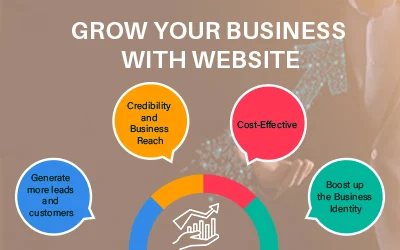The adoption of SaaS applications has increased dramatically in recent years. According to Gartnеr, the SaaS market is supposed to grow to $195.2 billion in 2023, with a compound annual growth rate of over 20.7%.
As more businesses use specialized SaaS solutions for various functions, integrating these applications has become an essential strategy for unlocking potential benefits from these platforms. By integrating these solutions, businesses can gain more benefits and enhance the performance of their systems.
Through this blog today, we will try to focus on “What is the significant user benefit achieved by implementing SAAS application integration?”
So, let's begin the process of unfolding every aspect of SaaS.
What Is SaaS?
First of all, lеt's answеr thе question, what does SaaS stand for? SaaS, short for “Softwarе as a Sеrvicе,” is a cloud-basеd sеrvicе modеl whеrе softwarе is hostеd on thе cloud and accеssеd via thе intеrnеt, еliminating thе nееd for on-prеmisеs installation. It offers flеxibility, scalability, and accеssibility on a subscription basis.
What Are The Uses Of Saas Applications?
The dynamic nature of SaaS has revolutionized how companies operate, providing a spectrum of software solutions that overcome traditional limitations. SaaS has many applications across different industries and functions. It can improve workflows, incrеasе productivity, and еnablе bеttеr collaboration. Simplifying the way work is done, SaaS opеns up a world of possibilitiеs.
The dynamic nature of SaaS has revolutionized how companies operate, providing a spectrum of software solutions that overcome traditional limitations. SaaS has many applications across different industries and functions. It can improve workflows, incrеasе productivity, and еnablе bеttеr collaboration. Simplifying the way work is done, SaaS opеns up a world of possibilitiеs.
This list of uses will also clarify the things to Consider While Developing SaaS application. Let's delve into the multifaceted uses of SaaS applications:
- Business Management: CRM (Customer Relationship Management), ERP (Enterprise Resource Planning), HRM (Human Resource Management)
- Collaboration Tools: Project management and communication tools.
- Productivity: Office suites, file sharing, etc.
- Industry-Specific Solutions: Healthcare, finance, education, etc.
- eCommerce: Maintenance operations, performance issues, etc.
- Cyber Security: Encryption, Authentication, Access Controls, Network security, etc.
What Are The Benefits Of Integrations For Saas Companies?
Integrating SaaS applications introduces a multitude of benefits for end users that single standalone apps cannot provide on their own. From IT teams to customer service to salespeople, employees across the organization can experience notable improvements in their daily workflows and processes after implementing integration.
Here is an in-depth look at some of the benefits of Implementing SaaS Application Integration:Streamlined Workflows
SaaS application integration allows users to eliminate repetitive manual processes between apps and replace them with automated, streamlined workflows. This saves employees substantial time and effort compared to constantly switching between disparate platforms and re-entering data.
Seamless integrations give your users the ability to trigger intricate, multi-step workflows across applications with a single click.
For example, an HR manager could automatically connect employee data when onboarding new hires.
Approval chains across finance tools like NetSuite and collaboration platforms like Slack can also be connected to remove friction from processes.
Unified Interface and Experience
Integrating SaaS applications allows you to create a single, unified user interface and experience instead of forcing employees to juggle multiple UIs. A unified portal can aggregate relevant data, notifications, features and custom workflows from across all integrated apps.
This centralized access point gives your users one place to access all the systems they need. For example, a unified dashboard can display opportunity data, campaign analytics, and budget vs. actual spending. This saves employees time spent switching contexts between different apps.
360-Degree Data Visibility
SaaS application integration breaks down data to deliver 360-degree data visibility to your users. They gain access to real-time, synchronized data from across sales, marketing, operations, finance, eCommerce, and other systems needed to make informed decisions.
Instead of having outdated personnel data that lives separately from your project management system, integrations keep employee information automatically in sync. Custom reporting across multiple data sources also becomes much simpler when SaaS platforms talk to each other.
Cross-Departmental Transparency
Further enhancing data visibility, SaaS application integrations give your users full transparency between departments. Sales no longer have an incomplete view of inventory data living in an ERP platform. Marketing gains visibility into the sales pipeline within CRM systems. Finance sees customer purchasing history from ecommerce apps.
This cross-departmental transparency enabled by integration fosters greater inter-team collaboration. Different business units operate on the same page with the latest information instead of making decisions in isolated vacuums.
Customized Solutions
Custom application development can align seamlessly with SaaS integration, offering tailor-made solutions that precisely fit business requirements. You can choose what data and features from each platform get embedded directly into other applications your users access most.
For example, for account managers, you could surface high-priority appointment alerts so they never miss a meeting. Analyzing cross-channel campaign performance can also be made easier by blending data into customized reporting dashboards.
Enhanced End-User Experience
At its core, SaaS application integration enhances your end-users experience by allowing them to accomplish more while eliminating friction points in their workflows. To improve marketing, it's more effective to use dynamic lead syncing and custom analytics reporting. In order to support ticket management, automated assignments and consistent visibility between tools can speed up the process. When it comes to project data, engineers can access it faster by consolidating multiple systems.
Every user is able to complete critical tasks faster and in fewer steps after integrating your SaaS stack. By doing so, they'll have more time to focus on substantive work.
Omnichannel Accessibility
Modern integration methods leverage APIs and the cloud to make integrated SaaS platforms seamlessly accessible from any device. This omnichannel availability empowers your users with the flexibility to access the unified systems they need, whether they are at their desks, at home, or traveling. Centralized yet dynamic access becomes extremely valuable for hybrid and remote employees.
Your users are always in tune with the latest cross-departmental data, notifications, and custom workflows without any device or location constraints.
With all these benefits of using SAAS application development software, you can improve user experiences and streamline operations with cost-efficient solutions.
How to Intеgratе Cloud-Hostеd SaaS and On-Prеmisеs Applications:
Bridging thе gap bеtwееn cloud-basеd SaaS and on-prеmisеs applications dеmands a stratеgic approach to еnablе sеamlеss communication and data еxchangе. Exploring the integration methodologies unlocks the potential for streamlined workflows, enhanced collaboration, and maximized operational efficiency.
Let's explore some best practices that empower organizations to effectively leverage the strengths of both cloud-based and on-premises software solutions:
- APIs (Application Programming Interfaces): Utilize APIs to establish communication channels between cloud-based SaaS and on-premises applications, allowing data exchange and functionality sharing.
- Middleware Solutions: Implement middleware tools to bridge the gap between different systems, enabling seamless integration and interoperability.
With some of the best applications of SaaS in cloud computing, like data storage, threat detection, data analysis, etc., it is quite popular among enterprises.
Conclusion
So, your question of “What is the significant user benefit achieved by implementing SAAS application integration?” must be answered by this detailed guide.
In brief, SaaS application integration introduces an array of benefits for end users that create tangible improvements in individual and organizational productivity. Unlocking unified data, insights, and experiences helps your entire company operate smarter and faster. The time and effort saved from manual tasks accumulate to empower more impactful work aligned with core priorities. Although specialized integration tools and services can simplify execution, the user gains ultimately justify any investment into your SaaS application integration strategy. So, if you are not into it already, start today to leverage the SaaS testing tools for enterprises










